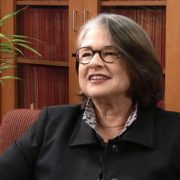Neuroscience Says Workplace Happiness Comes Down to Experiencing This Emotion Daily
/in Social Engagement, working for pay /by adminWhy Isn’t Business Preparing More for the Future of Aging?
/in Social Engagement, working for pay /by adminIt’s no secret that Americans are living longer and working longer or that both trends are likely to continue. People over 65 made up 13% of the U.S. population in 2000; they’re expected to be 20% by 2030. AARP estimates that Americans over 50 now spend $7.1 trillion annually and, as their numbers grow, that figure will more than double, to $15 trillion by 2020. So why aren’t American businesses preparing better for the future of aging, to serve their employees and their customers? And what should they be doing?
What We Know – And Don’t Know – About the Declining Labor Force Participation Rate
/in Social Engagement, working for pay /by adminToday’s unemployment rate of 4.8 percent, showing the United States still nearing “full employment,” will dominate the mainstream news. But behind the headlines is a troubling, stubborn trend: men and women dropping out of the labor force. Today’s report confirms this decline, with the labor force participation rate sitting at 62.9 percent compared to its 1990s peak of 67.3 percent. This declining participation rate, particularly among prime-age workers (ages 25 to 54), and its implications for…
Longevity Bonus: Work Longer, Live Longer
/in Social Engagement, working for pay /by adminFor some people, working well into their seventh to ninth decades anchors them to a fulfilling life. That’s, of course, if they love what they’re doing. I once knew a lawyer who worked until he was 102. For others, though, working hurls them down into a pit of despair. They may work for a wretched boss or company or be in an industry that’s dying. They may be physically unable to do the work. For those who are relatively healthy and engaged in their work, working well past traditional retirement age has its benefits: They may live longer. According to a recent study cited by the Center for Retirement Research at Boston College:
Study: Delaying Retirement Might Help You Live Longer
/in Social Engagement, working for pay /by adminDelaying retirement has many financial benefits. You can tuck away some of your continued earnings for the future and give your existing savings more time to compound. Social Security payments also increase for those who sign up at an older age. A new study from Oregon State University found that retiring after age 65 may additionally help you live longer.






